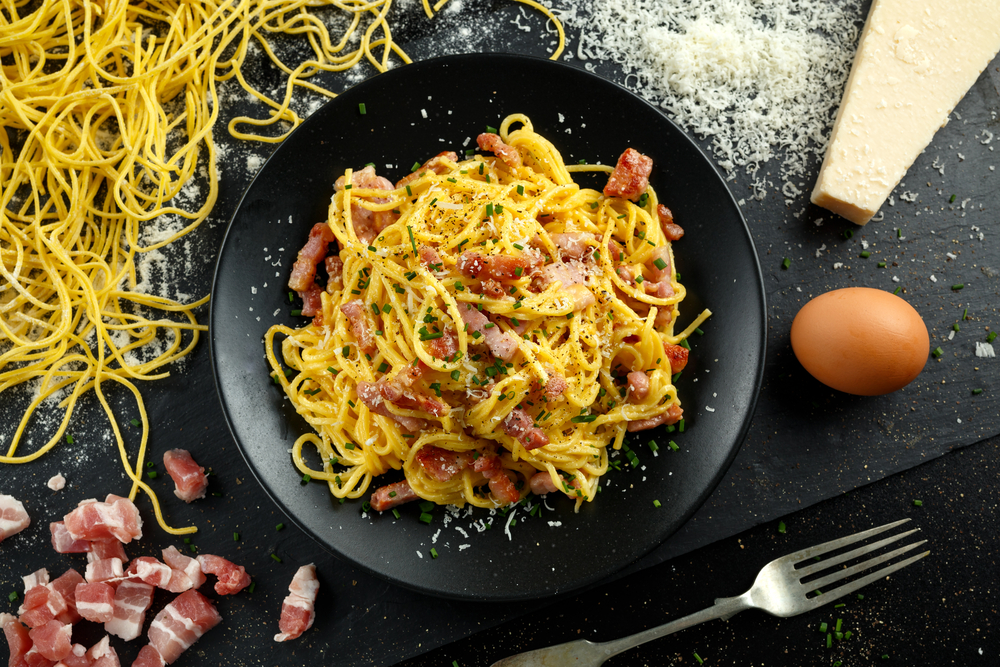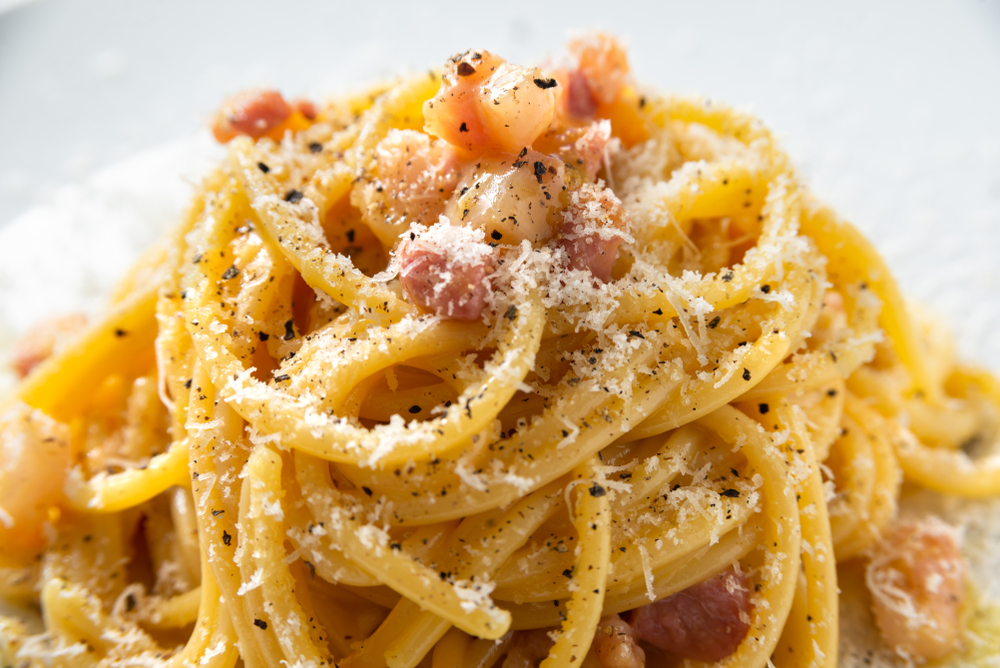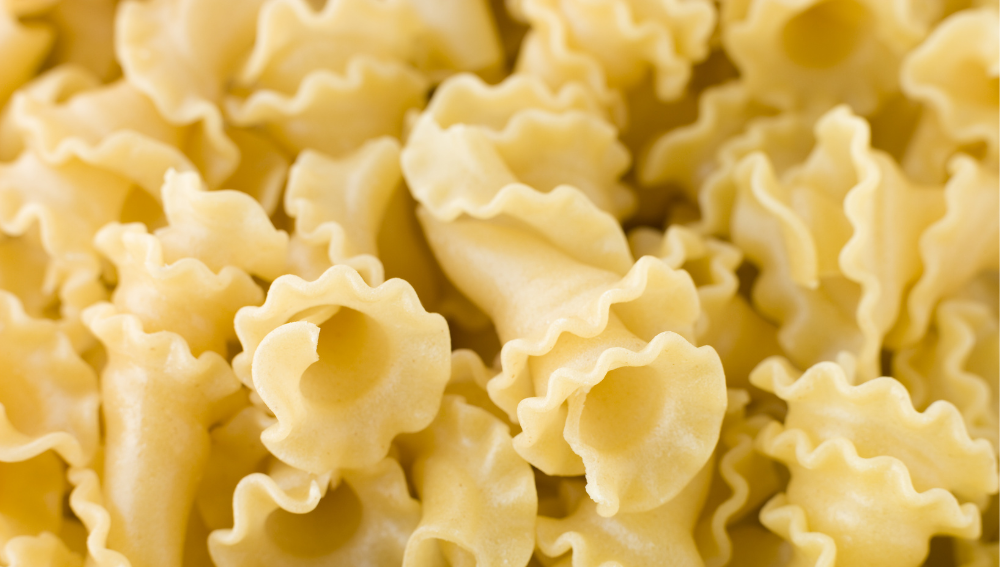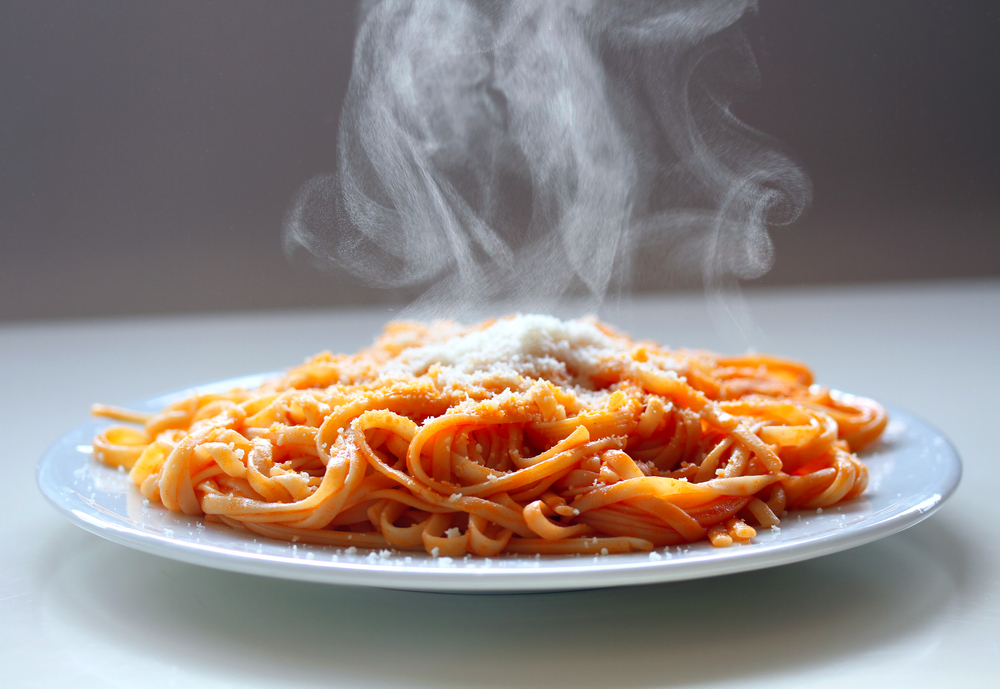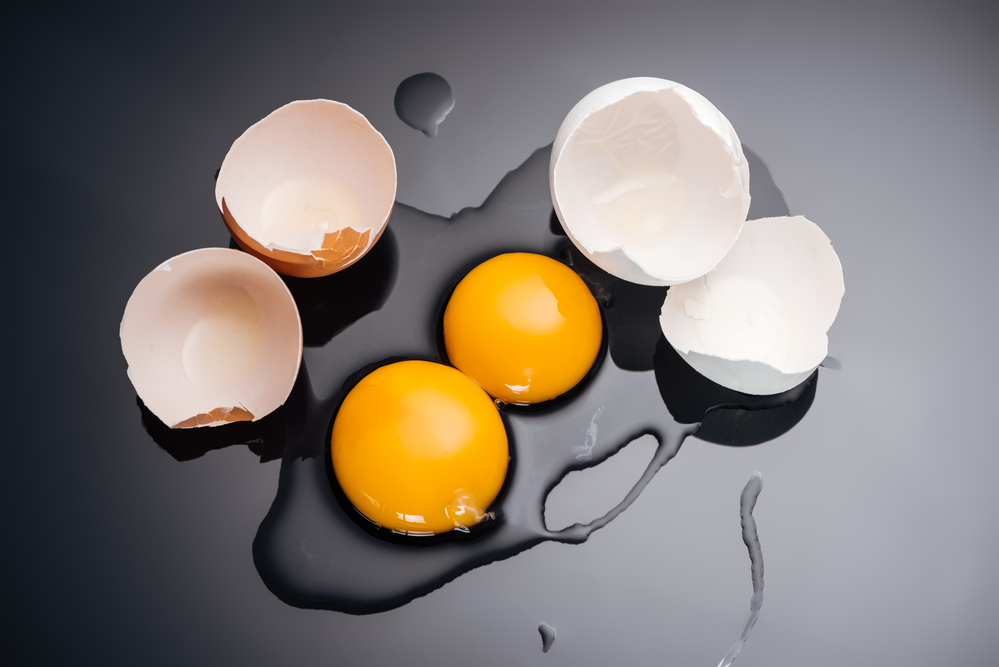Carbonara is an Italian pasta dish that has captured the hearts and taste buds of food enthusiasts around the world. Originating from Rome, this rich and creamy dish features a unique combination of flavors that leave a memorable impression on the palate.
To understand the taste of carbonara, it’s important to explore its core ingredients and the way they are blended to create the dish’s signature flavor.
At its core, carbonara primarily consists of spaghetti, eggs, pecorino cheese, guanciale or pancetta, and black pepper. Each of these ingredients plays a vital role in building the complex flavor profile that is synonymous with carbonara.
The guanciale or pancetta provides a salty, slightly smoky element, while the blend of eggs and cheese creates a velvety, smooth texture. The black pepper adds a subtle heat that perfectly balances the dish.
While traditional carbonara follows a specific recipe, there are several variations that introduce new ingredients or replace the classics, resulting in different, yet equally delicious versions of the dish.
By understanding the components and techniques used to create carbonara’s distinct taste, one can truly appreciate the culinary artistry that goes into crafting this iconic Italian dish.
Key Takeaways
- Carbonara is a rich and creamy Italian pasta dish featuring a blend of eggs, cheese, guanciale or pancetta, and black pepper.
- The core ingredients create a complex flavor profile that includes saltiness, smokiness, creaminess, and heat.
- There are various interpretations of carbonara, which use different ingredients or techniques, offering diverse and delicious interpretations of the classic dish.
Understanding Carbonara
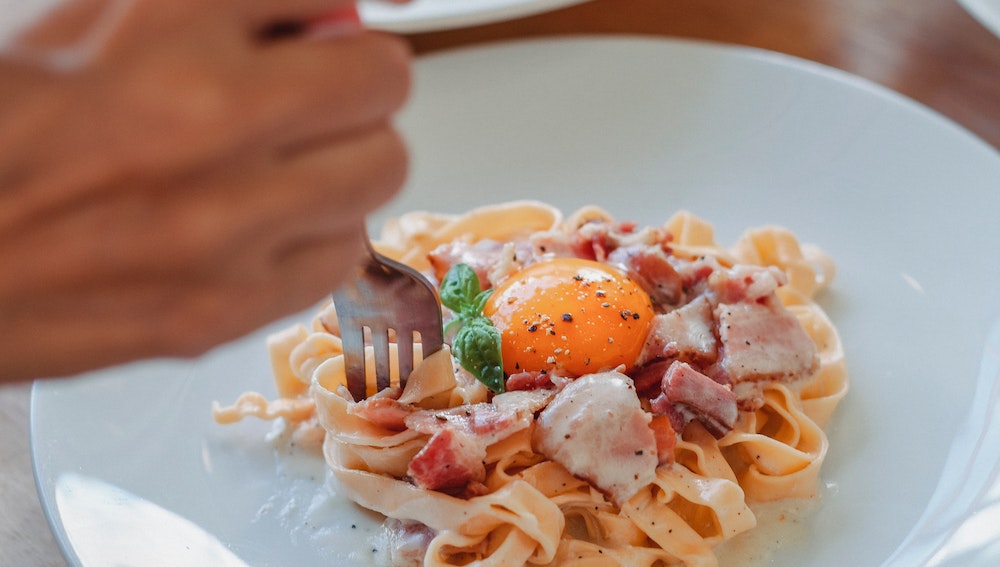
Carbonara is a classic Italian pasta dish originating from Rome, known for its creamy, rich sauce, and savory flavors. The dish primarily consists of pasta, usually spaghetti, combined with a sauce made from eggs, cheese, and pepper, which creates its distinct taste.
The sauce’s base, made primarily of eggs and cheese, is the key to carbonara’s unique flavor profile. Traditionally, Italian Pecorino Romano cheese is used, which imparts a tangy, sharp taste.
However, Parmesan cheese is also a popular alternative, offering a milder, nutty flavor to the dish. The addition of eggs to the sauce not only contributes to the rich creaminess but also serves as a source of protein making the dish hearty and filling.
In addition to its velvety sauce, a fundamental aspect of carbonara is the technique used to prepare it. Unlike other pasta dishes that require a stove-top sauce, carbonara relies on the heat from freshly cooked pasta to cook the egg and cheese mixture.
This process is essential for achieving a silky, smooth sauce without accidentally scrambling the eggs or curdling the cheese.
Another integral component of carbonara is the inclusion of a protein, typically guanciale or pancetta. These cured pork products lend a salty and smoky depth of flavor to the dish.
When cooked, the rendered fat is also incorporated into the sauce, further enhancing the taste and texture.
The appearance of carbonara is just as enticing as its flavor. The glistening strands of pasta are generously coated in the luscious, creamy sauce, with flecks of black pepper and bits of crispy, caramelized meat scattered throughout.
The dish has an earthy color palette, thanks to the combination of egg yolks, cheese, and pepper.
In summary, carbonara is a beloved Italian pasta dish hailing from Rome, celebrated for its rich, creamy sauce, and satisfying, savory flavors.
The combination of eggs, cheese, pepper, and cured pork, coupled with the unique cooking technique, results in a delectable dish that is both visually appealing and delicious to taste.
Main Ingredients of Carbonara
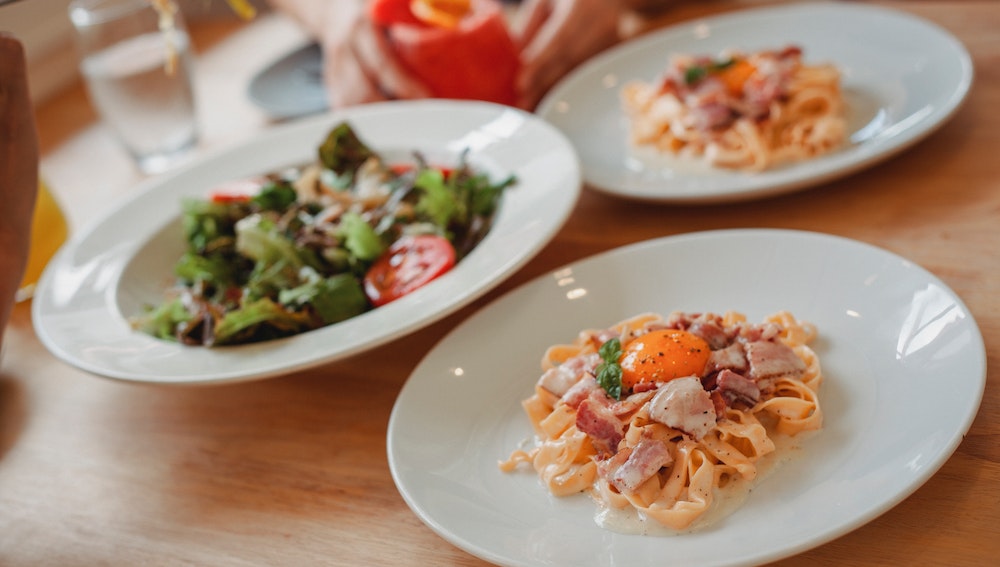
Protein Used in Carbonara
Carbonara traditionally uses cured pork as its main protein source. The most common options are guanciale, pancetta, or bacon. Guanciale, made from pork cheek, is the most authentic choice, followed by pancetta, which comes from pork belly. Bacon can be used as a more accessible substitute but may alter the dish’s taste and texture.
Cheeses in Carbonara
In a classic carbonara, a combination of parmesan and pecorino romano cheese is used. Parmesan, or Parmigiano-Reggiano, helps create a creamy and smooth texture, while pecorino romano, made from sheep’s milk, adds a sharp and tangy flavor. The cheese mixture is crucial to create the unique taste of pasta carbonara.
| Cheese Type | Origin | Flavor Profile |
|---|---|---|
| Parmesan | Cow’s milk | Nutty, savory |
| Pecorino Romano | Sheep’s milk | Sharp, tangy |
The Role of Eggs in Carbonara
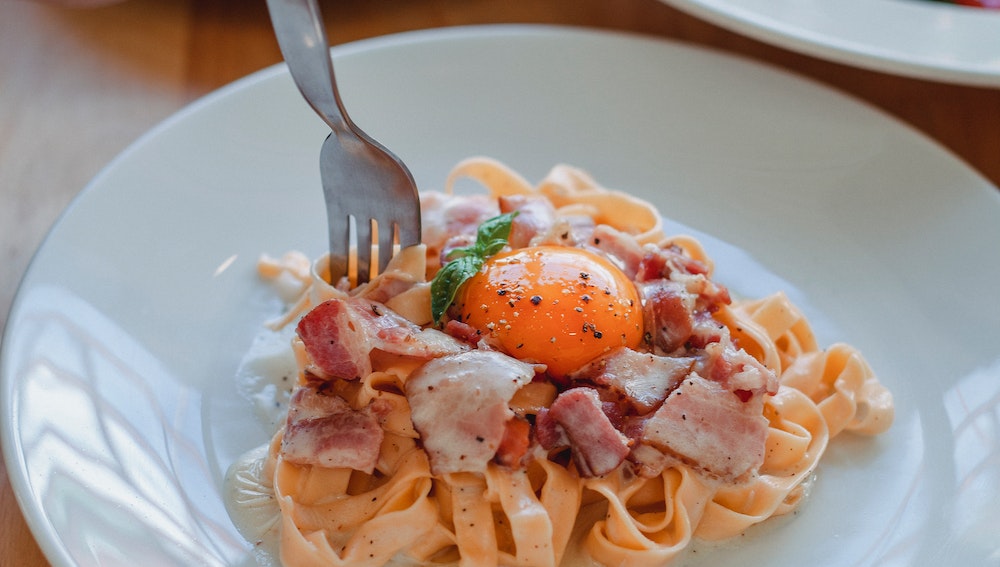
Eggs play a vital role in carbonara, specifically egg yolks. They are responsible for the rich and creamy consistency of the sauce.
At room temperature, the eggs are combined with the cheese mixture and black pepper. The hot pasta and pasta water are then added to the mixture, gently cooking the eggs while preventing them from becoming scrambled.
Pasta Types in Carbonara
Various types of pasta can be used to make carbonara, but certain shapes work better than others. The most popular choices are:
- Spaghetti: Thin, long strands hold the sauce well and are effortlessly twisted around a fork.
- Bucatini: Similar to spaghetti but hollow, allowing more sauce to cling to each strand.
- Rigatoni: A tubular shape with ridges that trap the rich carbonara sauce.
To prepare the dish, the pasta is cooked in boiling, salted water until al dente. The pasta water, high in starch content, is used to adjust the sauce’s consistency, giving it a silky, smooth finish.
Creating the Carbonara Flavor
Preparing and Cooking the Ingredients
To create a carbonara with a rich, creamy texture and delightful taste, it all starts with choosing and preparing the right ingredients. The flavor of this dish is built on a combination of fresh, high-quality components.
Eggs should be fresh, pasta should be cooked al dente, and the other ingredients should be handled correctly.
Begin with rendering the fat from a flavorful and smoky ingredient like pancetta or guanciale. This fat will provide a base for the dish’s savory and tangy taste. Once it is crisp and golden, drain it and set aside while reserving the fat in the pan for later use.
Timing is crucial when cooking the pasta. Aim for al dente—it should be tender, but still have a slight bite. Cooking the pasta to perfection is important because it contributes to the overall silky and velvety texture of the dish.
Combining Ingredients Correctly
A crucial step in achieving the perfect carbonara flavor is combining the ingredients correctly. Start by whisking together the eggs, cheese (such as Pecorino Romano or Parmesan), and freshly ground black pepper.
This mixture will provide the creamy, eggy, and pungent notes that are characteristic of carbonara.
When the pasta is just about cooked, reserve some of the pasta water. The hot pasta water helps in preventing the dish from becoming too heavy or too thick.
The moment the pasta is done and drained, it should be immediately mixed with the reserved fat in the pan.
To avoid curdling the sauce, work quickly and gradually introduce some hot pasta water into the egg mixture, stirring constantly. This process will temper the eggs, resulting in a smooth and creamy sauce.
Toss the hot pasta with the tempered egg mixture, making sure to coat every strand evenly. The residual heat from the pasta will cook the eggs, creating a velvety, rich sauce.
Finally, add the crispy pancetta or guanciale and give the dish a good stir to combine all the flavors. Keep in mind that carbonara should not be overly salty or heavy.
The final product should be a comforting and complex dish with a perfect balance of flavors and textures.
Other Variations of Carbonara
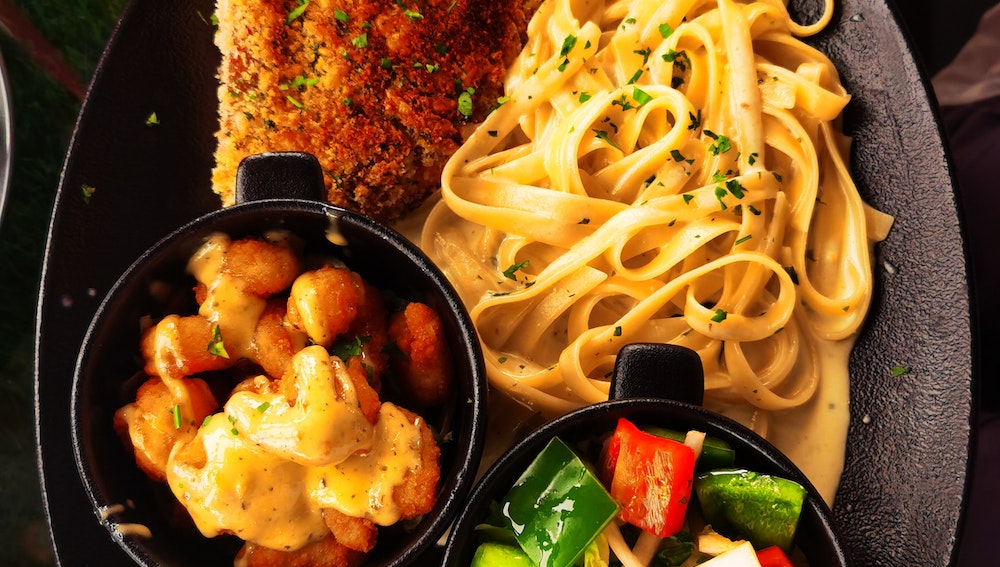
Modern Variations
Over the years, the traditional carbonara recipe has undergone some changes giving rise to various modern variations. For instance, many recipes now include additional ingredients like garlic, onions, and mushrooms, which add a new depth of flavor to the dish.
These variations still maintain the characteristic creamy texture and velvety sauce but incorporate a new range of flavors and aromas.
Using alternative noodles like fettuccine or linguine instead of spaghetti is also a common trend in modern carbonara dishes. The broader noodles provide a different experience while allowing the rich carbonara sauce to cling onto them just as well as the classic spaghetti.
Another popular variation is using chicken or other proteins to create a hearty meal that caters to different preferences.
Alternative Ingredients
As more and more people experiment with carbonara, alternative ingredients have become increasingly popular. For those looking for a richer, creamier sauce, adding a touch of cream or using Alfredo sauce as a base works well.
While purists argue that this is no longer carbonara, others appreciate the velvety texture it provides.
When it comes to cooking the carbonara sauce, some recipes call for a bit of butter in the skillet or Dutch oven, intensifying the aroma and adding a touch of richness.
Another variation is using olive oil instead of the traditional rendered drippings from pancetta or bacon. Olive oil brings a distinct and sharp taste to the dish while maintaining a silky sauce.
To add a bit of extra flavor to the dish, many cooks enjoy adding a few cloves of minced garlic and sautéing them with the meat. Additionally, tossing in finely chopped onions or mushrooms can enhance the overall profile and offer a different take on the original recipe.
Preparing carbonara is all about finding balance in ingredients and technique. Adjusting heat levels while cooking the beaten eggs can help achieve the desired velvety finish without curdling the sauce.
Using a colander to drain the pasta and tongs to toss it with the sauce ensures an even coating and well-blended dish. Lastly, experimenting with the salted water for boiling the Italian pasta and the combination of Romano and other cheeses creates a unique flavor palette that suits individual tastes.
With these variations and alternative ingredients, home cooks can create their perfect version of a delicious carbonara dish while staying true to its core essence of a rich, creamy sauce and tender pasta.
Frequently Asked Questions
How does carbonara differ from Alfredo?
Carbonara and Alfredo are two distinct Italian pasta dishes. While both creamy, they differ in their ingredients and preparation methods. Alfredo primarily uses butter and Parmesan cheese to create a rich, creamy sauce, while carbonara relies on a mixture of eggs, Pecorino Romano cheese, and pancetta to form its signature velvety coating.
Additionally, Alfredo often accompanies fettuccine noodles, whereas carbonara is traditionally served with spaghetti.
What is the signature taste of carbonara?
Carbonara’s signature taste comes from its unique blend of simple yet flavorful ingredients. The core components – eggs, cheese, pancetta, and pepper – come together to create a rich, savory, and slightly tangy flavor profile that’s both satisfying and indulgent.
The saltiness of the pancetta complements the creamy texture of the sauce, while the Pecorino Romano cheese and eggs impart a subtle sharpness.
Which ingredients influence carbonara’s flavor?
The main ingredients that influence carbonara’s flavor are eggs, Pecorino Romano cheese, pancetta, and black pepper. The eggs and cheese create a creamy, velvety sauce that coats the pasta, while the pancetta adds saltiness and depth.
A generous amount of black pepper provides a hint of warmth and spice to complete the dish’s overall flavor.
Can the taste of carbonara vary by recipe?
Yes, the taste of carbonara can vary by recipe. Although traditional carbonara predominantly uses eggs, Pecorino Romano cheese, pancetta, and black pepper, some variations may incorporate ingredients like heavy cream, garlic, onion, peas, or different types of cheese.
These modifications can alter the dish’s taste, making it milder, richer, or more complex, depending on the added components.
How does the texture of carbonara impact its taste?
The texture of carbonara significantly impacts its taste. The smooth and creamy sauce, formed by the eggs and cheese, coats the pasta evenly and contributes to the dish’s indulgent feel.
The tender pancetta enhances the mouthfeel further by adding a slight chewiness – and its rendered fat also blends into the sauce, giving it additional richness. The combination of these textures amplifies the flavors and contributes to carbonara’s overall gastronomic appeal.
What makes carbonara a popular Italian dish?
Carbonara is a popular Italian dish for several reasons. Its simplicity, relying on just a few flavorful and easy-to-find ingredients, makes it an appealing choice for home cooks.
Furthermore, its rich, indulgent taste and satisfyingly creamy texture make it a universally loved option for pasta lovers. The dish’s versatility, allowing for variations and adaptations, also helps to maintain its popularity among Italian cuisine enthusiasts.


